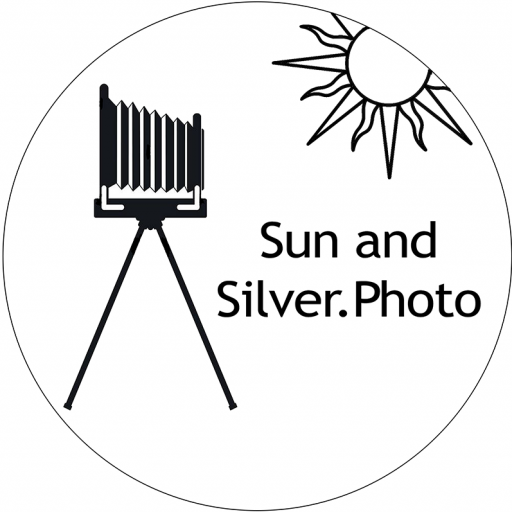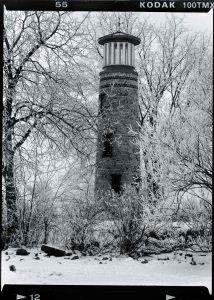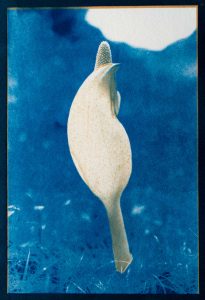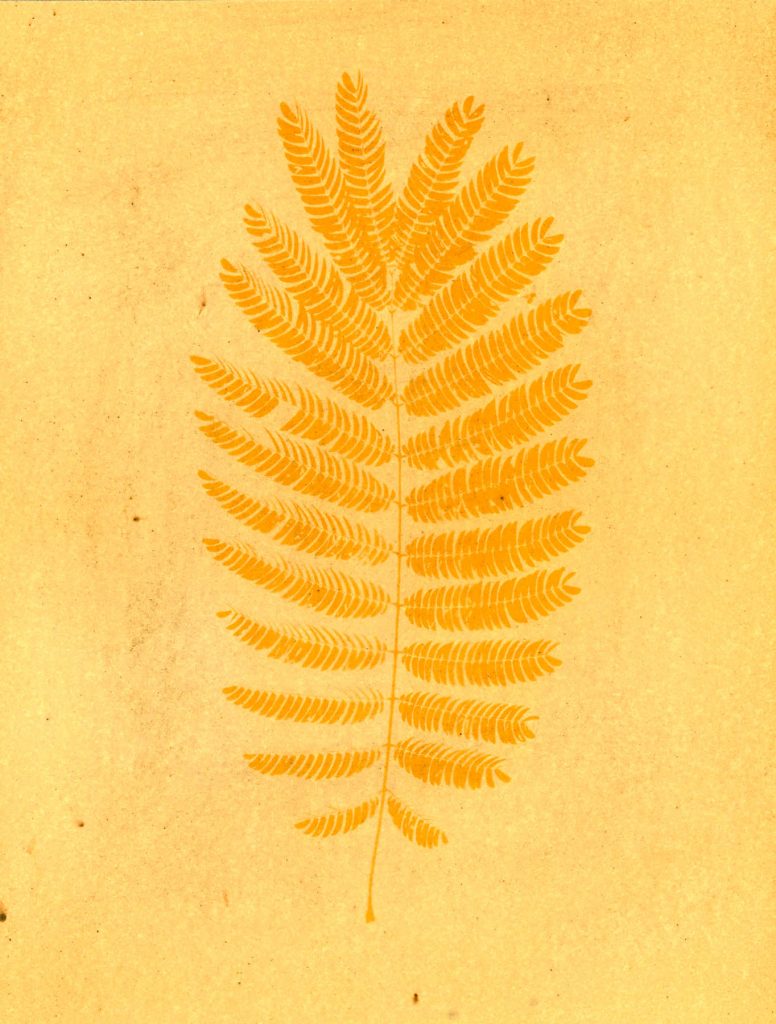
I focus on 19th century photography methods especially tintype (wet plate collodion), salt printing and cyanotypes. I do sometimes fiddle with other, less well known, techniques. They say variety is the spice of life so here is a Turmeric Anthotype of a fern.
So what in the name of silver nitrate is a turmeric anthotype!?! In 1842 John Herschel put out a paper on a new photographic processes. Essentially, he experimented with using plant based pigments exposed to light to produce photographs. So the anthotype process was born. A turmeric anthotype uses turmeric extract and sunlight to produce a photographic print.
Turmeric is a plant in the ginger family that has bright yellow colored roots. It is used as a spice and may have medicinal properties. So to make a turmeric anthotype you:
- Mix powdered turmeric root with alcohol (I use 95% Everclear)
- Coat paper with the extract in a low light room
- Allow the paper to dry
- Place a negative on the paper in a printing frame
- Expose to sunlight – sometimes for hours and hours
- Wash the print in water to remove excess extract & dry the print
The image produced is a result of the sunlight fading the color of the turmeric in the exposed areas (not blocked by the negative).
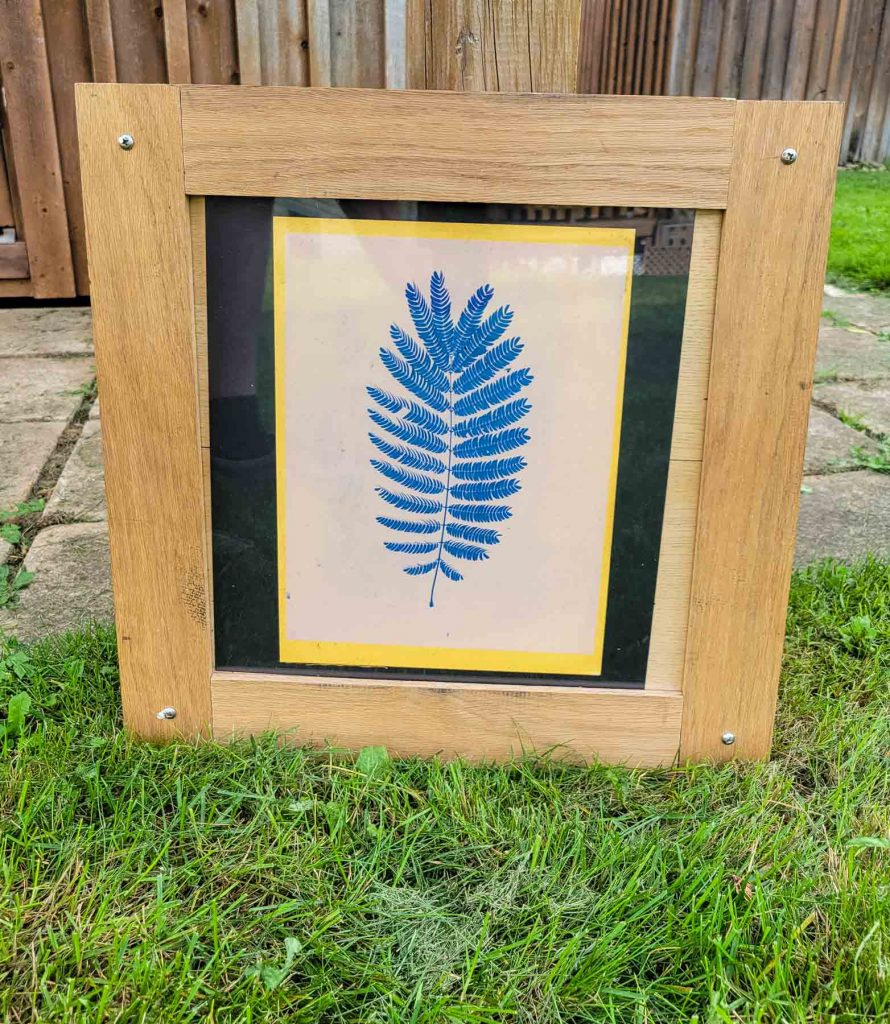
You can learn more about anthotypes on the Alternative Photography website.
All matter of plants, flowers and roots can be used for the process and each produces a unique color and tonal range. The downside of anthotypes is that they are definitely not archival! Anthotypes will fade as light degrades the pigment. They may last years in diffuse light but eventually the image will be gone.
But in some mystical way I like the ephemeral nature of anthotypes. Like our lives they have a cycle – they are formed, enjoyed in their prime, change as they age, and then fade away.
Back to my Blog
